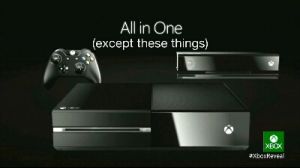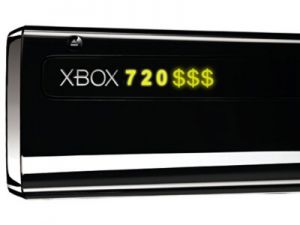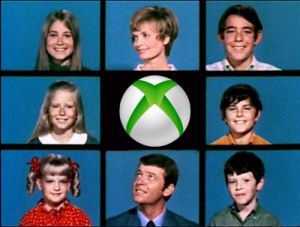Five Things They Should Have Included On Xbox One But Didn't

A new generation of games is now fully unleashed upon the world. Every system has updated to its latest issue, with Nintendo's Wii U and 3DS handheld, Sony's Playstation 4 and PS Vita portable and now also Microsoft and their Xbox One. The gang's all here.
Out of all those options, the rockiest preparation towards launch may have been Microsoft's device. With its original announcement, the community came to an uproar regarding its strict policies. Many aspects of the next generation console would be tied down, with a mandatory internet connection standing at the base of that. It's only through a large reconfiguration of the original plan that the launch has now been, overall, positively received. To be fair, the device does offer consumers a ton of features that can make it pivotal in a household's need for entertainment.
Still, anything can always be done better and certainly as many options were once put on the table, removed and then replaced, there are some oversights Microsoft could have considered. It never hurts to completely flatten the competition, instead of just riding the tide. Here are five things the Xbox One could've have done to increase its potential, but ultimately didn't.
5. Lower PriceAdmittedly, users get a lot of bang for their buck. An Xbox One can be used as a simple gaming device, but also holds a motion controller that helps people at every turn. A camera detects the body in the room and recognizes who it belongs to, follows them around on video chat and can detect voice commands and scan codes. Inside of the console, it's possible to watch shows through one of the many applications, record gameplay footage or even partake in fantasy sports. Its tagline; 'the complete All-in-One games and entertainment system,' isn't undeserved.

Still, €499 is also a chunk of change for a sizable amount of technology that might be forced onto people. Not everyone is into sports, not everyone wants to watch shows through Xbox, not everyone feels the need to record themselves and throw it amidst the morass of user-generated content. More importantly, not every gamer can simply front the price of a terrible used car on a gaming station, certainly not underage audiences. It's a stretch to have them rely on a family interest with such a price. Their competitors know better. Learn from the Playstation 3. Only ship what you can sell.
4. Touchpad
Since looking at the competition is something that's done in any market, it seems strange for Microsoft to overlook a few key elements in the gaming industry. Everyone else besides Xbox One offers a touchpad or touch controls in some format, yet there is no Xbox One device included that does the same. Sony has a touchpad interface, Nintendo has a GamePad and both companies offer touch controls for their handhelds. Even the mobile market relies on tangible freedom. Here, Xbox is a one-trick pony, forcing all of its freeform inputs through motion controls.

Yes, there is SmartGlass technology, which is solid in itself as well, but as an outsider peripheral it faces an uphill battle that Kinect had with Xbox 360. If it's not shipped within the core, like the Kinect now, it is dismissible and overlooked as a way to play games. Few took the first Kinect seriously and it was often described as a gimmick. Similar things ring true for SmartGlass and that's only for those who make an auxiliary investment for a Windows 8 mobile device. It should've followed Sony with a touch-enabled controller to complement Kinect, instead of staying the course and betting everything on one horse.
3. Family Sharing
Anyone that followed the debacle that was the Xbox One reveal knew that this would come, just not when. During one of the many calibrations on what would and wouldn't be included into the Xbox One's final version, Microsoft decided that it would punish its consumers for not taking the internet bait by taking away family sharing. No longer would games be able to be swapped between a set of users, because of some rhetoric on how this system works. It sounded believable at first, given that checking the validity of this design is crucial to hold off abuse, but then someone else shattered Microsoft's credibility by providing just that exact service.

People who use a Steam account on PC can take part in an allocation plan. While Steam is indeed a digitally locked platform as well, it does offer an offline mode, where games can be played without requiring an online component. That has put a sizable dent in Microsoft's conscious decision to remove the sharing feature, rather than make it seem a necessary evil. They just opted to take it back. They might now want to rethink this call, since they gave a competitor the upper hand in doing so.
2. Virtual Console
One of the first features to be debunked by Microsoft, when talking about the Xbox One, was backwards compatibility for Xbox 360 games. 'If you're backwards compatible, you're really backwards,' ex-Microsoft executive Don Mattrick said regarding its implementation, stating only 5% of users play old games on new technology. Maybe that's not true, but regardless, engineering ways to play Xbox 360 titles inside an Xbox One doesn't seem cost effective, when the market is still flooded with the older consoles. Buy an Xbox 360 and play on that, if you don't own one already. It's as simple as it is effective and hassle free.

More so, Microsoft is dawning the age where it has a gap in technology worth mending. Plenty of gems were once released on the first Xbox and those are a lot harder to come by now. Instead of individually putting in time and effort into high definition remakes for classics, why not have them all be rediscovered simultaneously on a virtual console. Surely, many will want to relive the iconic Halo days or jump into some good, old Project Gotham Racing. Both Nintendo and Sony use this as a highly successful addition to their digital realm; Xbox One should too.
1. Free Multiplayer
It's understandable that asking for both a lower financial threshold and more technology might come off as contradictory. Neither is applied, however. Still, where Microsoft completely dropped the ball is on its online presence.
For years, it held an Xbox Live service as an additional payment for inexplicable reasons, as their competitors offered the same for free. Server stability was an inaccurate copout used to defend it, but no competing service was ever unstable, outside of an isolated exception.

With Xbox One, instead of dropping these fees, they looked at Sony and padded their online blockade with supposed 'free' games. It's not free, if you're paying for it. They're not even equated to newer Playstation freebies.
Everyone deserves the full potential for the game they purchased. You've already paid for the game, you don't need to pay more to unlock its online component. What good is selling Halo 5 at €60, if it will only yield a 5-hour campaign and require an additional fee for the privilege of taking your disc online? There is no justification for not originally including maintenance costs within the revealed price. One thing the always-online announced machine should have had as a self-explanatory design is the right to be always online.
What do you think? Are we correct with our list - Do you agree or disagree with us, and what else do you think should have been included with the Xbox One?

The Kinect and Smartglass are both pathetic toys, I could just use a plain controller.
And all of those things are done better by a PC :D
Free Multiplayer, ability to have my whole steam library on all my machines. Native 4K-gaming on my TV in the living room.
And best of all, cheaper games
I'm glad they didn't include a touch pad. I hate the things.
Totally agree. Microsoft could definitely done a lot better.
[size=12][/size] Hating on xbox ...
I agree with the previous post. Your article is a bit ridiculous. I would mention a couple of points though.
Backwards compatibility is really a non issue for most people. I still have my Xbox 360 and will use that for backwards compatibility
You are wrong about Xbox Live Gold. I have PSN and Gold and PSN is free for a reason. It is not out of the good will of Sony, they were second at the table with a clearly inferior service. When I use it, it is slow, awkward to use, no cross game chat, it just is not as good as Xbox Gold. Gold is a premium service and I am willing to pay so that they can improve the infrastructure and provide better online services all for less than $5 a month. Sony I am sorry is way behind in this department.
A touch pad? What for? Who does not have a smart phone?
5. Can't be a lower price, you stated why yourself, and it's not $499 for something that's being forced, it's a $100 difference for a device that people feel is being forced on them
4. A touchpad might have been nice, but then they would just be blamed of copy-catting. You also do not need a Microsoft phone or tablet to use smartglass; unlike the PSN app it is available across all major platforms.
3. Will be back. This was made clear. They have to change how it will be implemented which is why it missed launch.
2. Really?
1. PSN also charges for multiplayer except in specific instances (true F2P games). Games with Gold is also technically more "free" than PS+ (which you are comparing to) as GWG games are yours regardless of renewal (right now, on 360 anyway) whereas PS+ content that is not acquired on sale simply cease to be accessible once you miss a monthly payment.